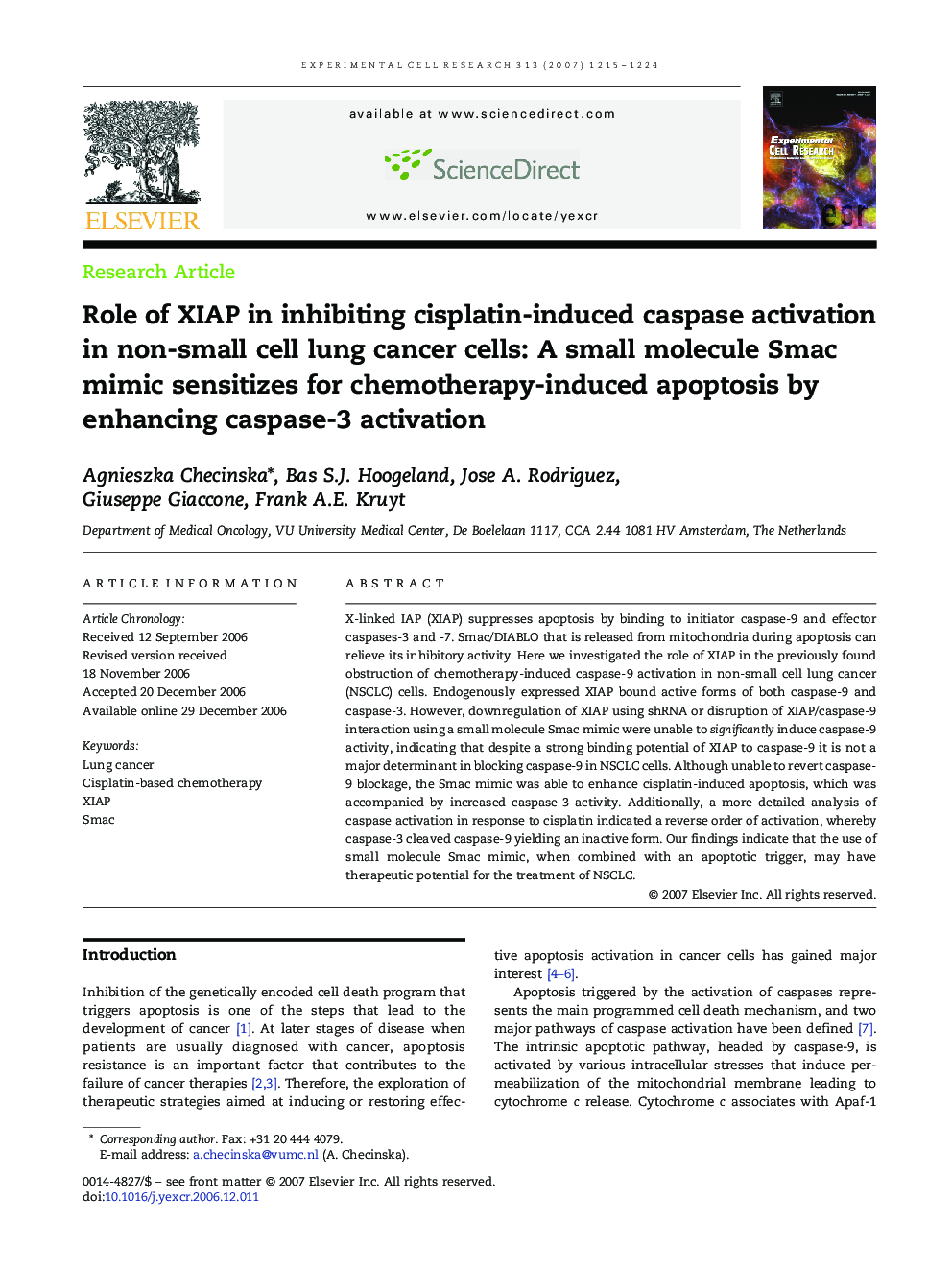| Article ID | Journal | Published Year | Pages | File Type |
|---|---|---|---|---|
| 2132687 | Experimental Cell Research | 2007 | 10 Pages |
X-linked IAP (XIAP) suppresses apoptosis by binding to initiator caspase-9 and effector caspases-3 and -7. Smac/DIABLO that is released from mitochondria during apoptosis can relieve its inhibitory activity. Here we investigated the role of XIAP in the previously found obstruction of chemotherapy-induced caspase-9 activation in non-small cell lung cancer (NSCLC) cells. Endogenously expressed XIAP bound active forms of both caspase-9 and caspase-3. However, downregulation of XIAP using shRNA or disruption of XIAP/caspase-9 interaction using a small molecule Smac mimic were unable to significantly induce caspase-9 activity, indicating that despite a strong binding potential of XIAP to caspase-9 it is not a major determinant in blocking caspase-9 in NSCLC cells. Although unable to revert caspase-9 blockage, the Smac mimic was able to enhance cisplatin-induced apoptosis, which was accompanied by increased caspase-3 activity. Additionally, a more detailed analysis of caspase activation in response to cisplatin indicated a reverse order of activation, whereby caspase-3 cleaved caspase-9 yielding an inactive form. Our findings indicate that the use of small molecule Smac mimic, when combined with an apoptotic trigger, may have therapeutic potential for the treatment of NSCLC.
